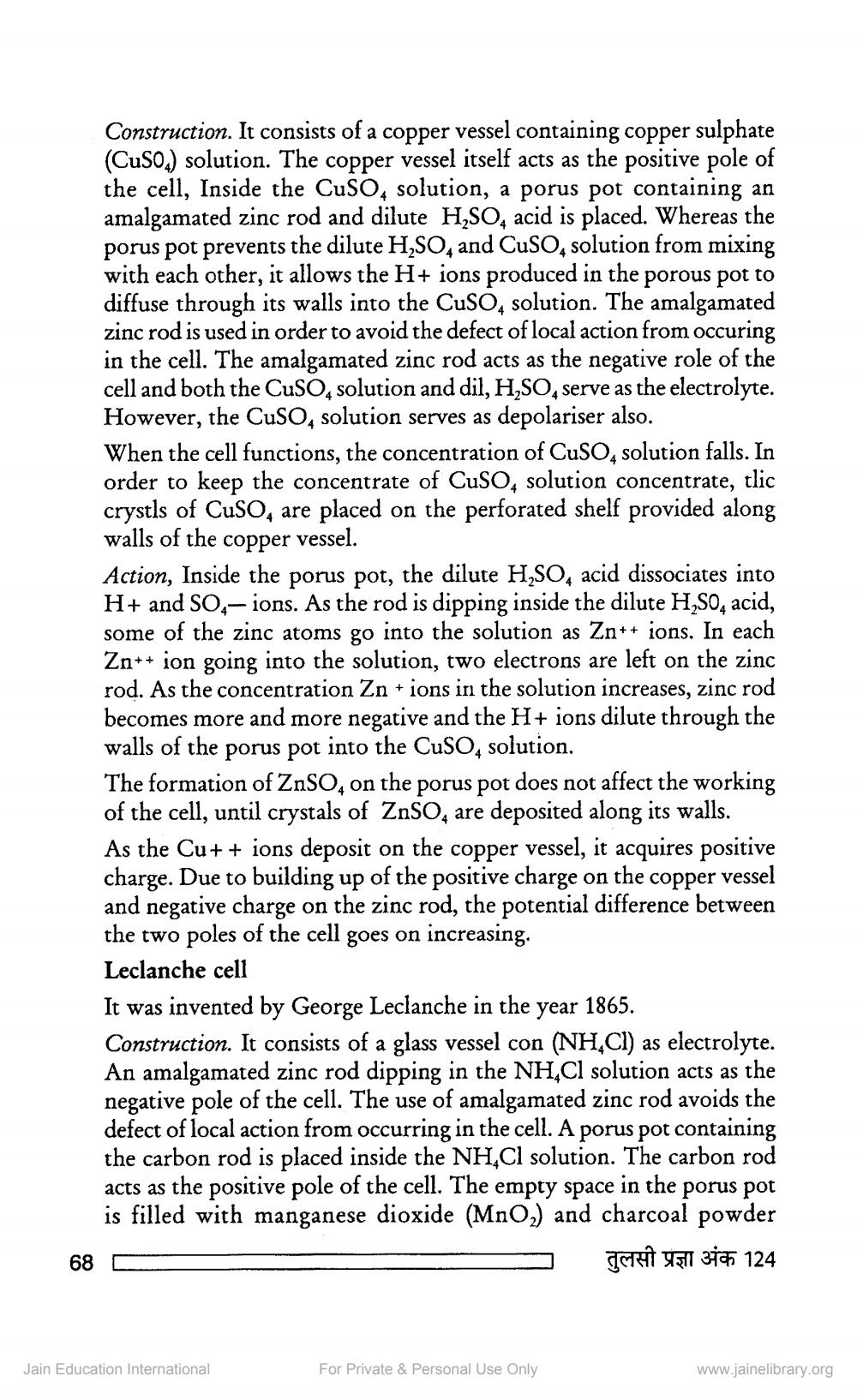________________
Construction. It consists of a copper vessel containing copper sulphate (Cuso.) solution. The copper vessel itself acts as the positive pole of the cell, Inside the CuSO, solution, a porus pot containing an amalgamated zinc rod and dilute H,SO, acid is placed. Whereas the porus pot prevents the dilute H2SO, and CuSO, solution from mixing with each other, it allows the H+ ions produced in the porous pot to diffuse through its walls into the CuSO, solution. The amalgamated zinc rod is used in order to avoid the defect of local action from occuring in the cell. The amalgamated zinc rod acts as the negative role of the cell and both the CuSO, solution and dil, H2SO, serve as the electrolyte. However, the CuSO, solution serves as depolariser also. When the cell functions, the concentration of CuSO, solution falls. In order to keep the concentrate of CuSO, solution concentrate, tlic crystls of Cuso, are placed on the perforated shelf provided along walls of the copper vessel. Action, Inside the porus pot, the dilute H2SO, acid dissociates into H+ and S0,- ions. As the rod is dipping inside the dilute H,80, acid, some of the zinc atoms go into the solution as Zn++ ions. In each Zn++ ion going into the solution, two electrons are left on the zinc rod. As the concentration Zn + ions in the solution increases, zinc rod becomes more and more negative and the H+ ions dilute through the walls of the porus pot into the CuSO, solution. The formation of ZnSO, on the porus pot does not affect the working of the cell, until crystals of ZnSO, are deposited along its walls. As the Cu++ ions deposit on the copper vessel, it acquires positive charge. Due to building up of the positive charge on the copper vessel and negative charge on the zinc rod, the potential difference between the two poles of the cell goes on increasing. Leclanche cell It was invented by George Leclanche in the year 1865. Construction. It consists of a glass vessel con (NH,CI) as electrolyte. An amalgamated zinc rod dipping in the NHCl solution acts as the negative pole of the cell. The use of amalgamated zinc rod avoids the defect of local action from occurring in the cell. A porus pot containing the carbon rod is placed inside the NH.Cl solution. The carbon rod acts as the positive pole of the cell. The empty space in the porus pot
is filled with manganese dioxide (MnO) and charcoal powder 68 D
-
THT 451 3195 124
Jain Education International
For Private & Personal Use Only
www.jainelibrary.org




